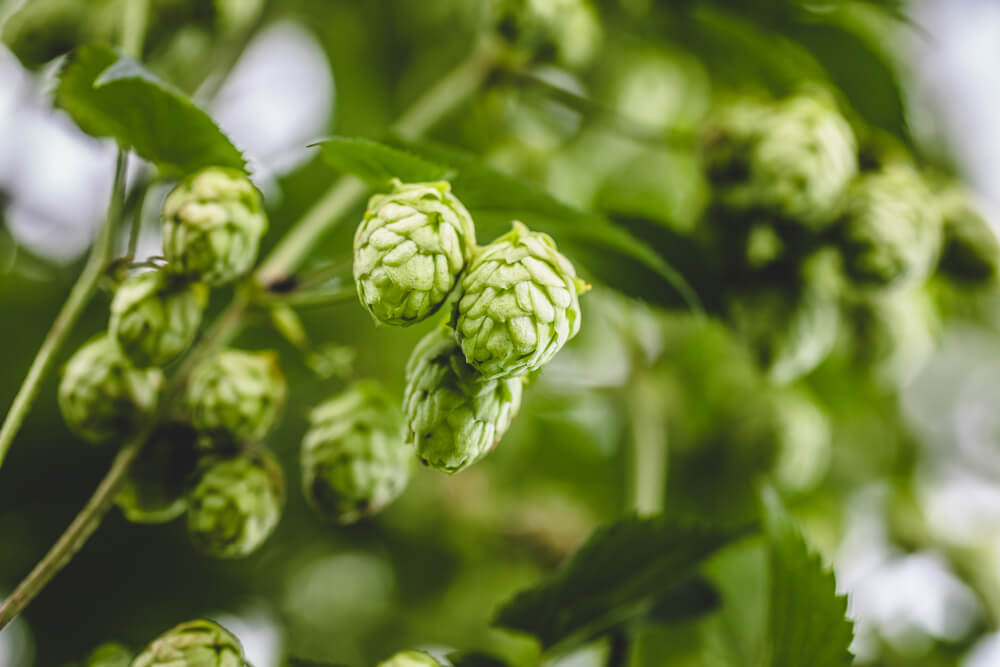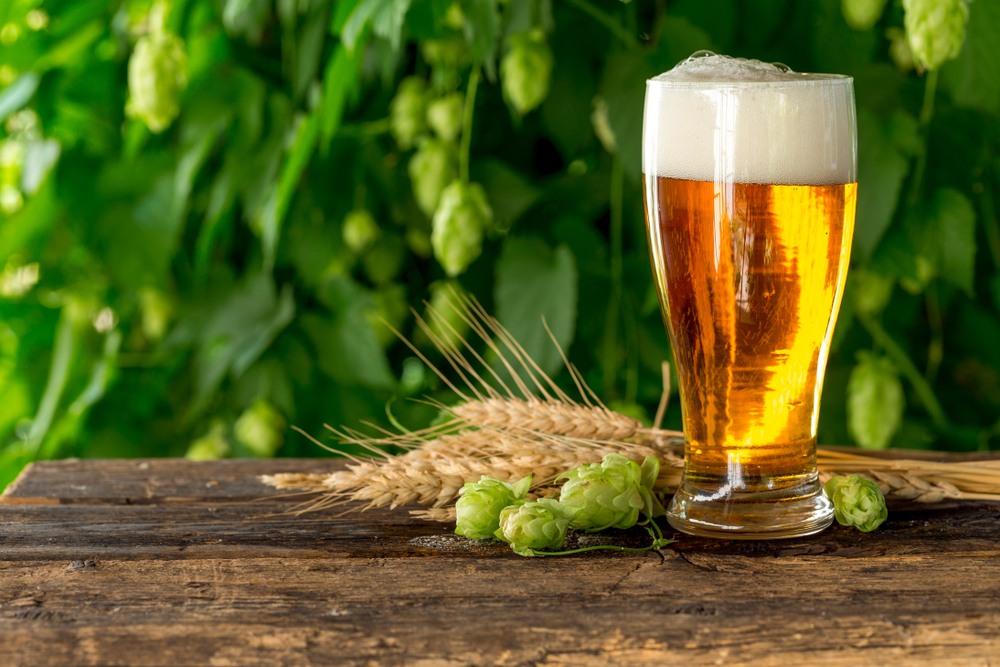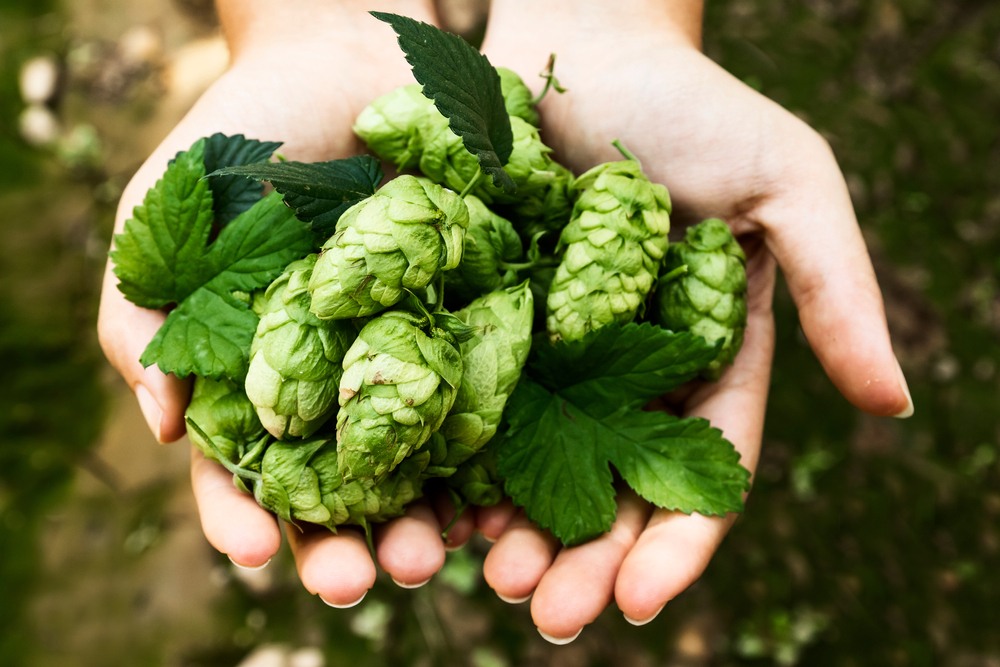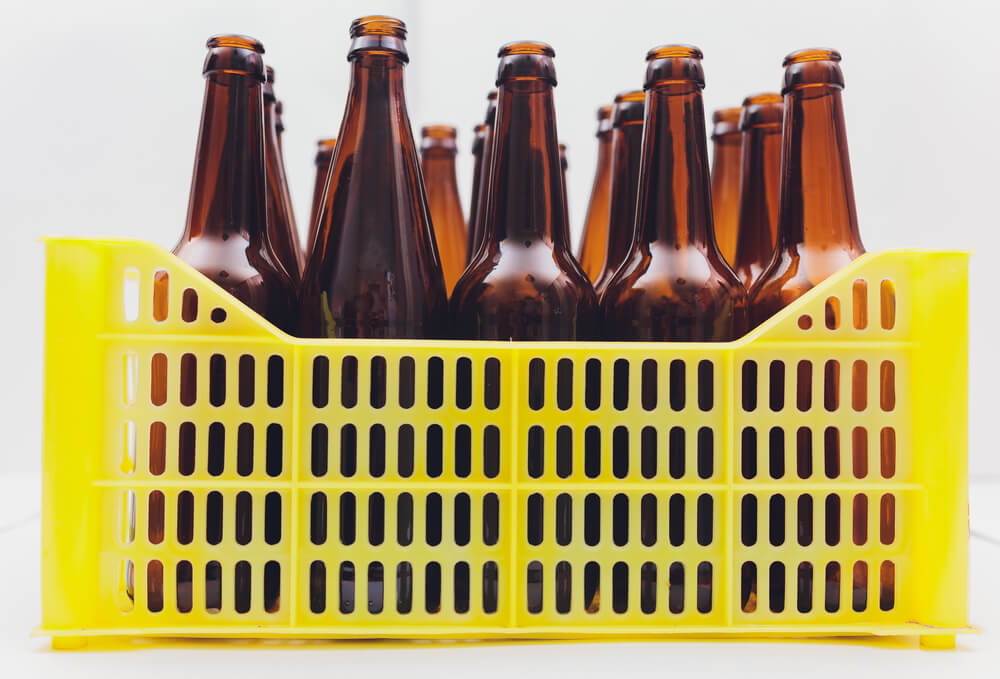Learn where do beer hops come from and where they’re grown.
Hops are the one beer ingredient that many people wonder about. They are an important ingredient in today’s beer, and their bitter flavors seem to have spawned the bitter beer movement where IPAs are king and the more hops in the brew, the better.
But what are hops? And where in the heck do they come from?
Hops are weird green pellets that we add during our boil for most homebrewers. Many of us love the aroma of the hop pellets as we add them to our wort, and if you’re a fan of the IPA or the pale ale, you’re probably a fan of the end results of adding hops. That piney, citrusy, bitter taste makes these beer styles so loved by some, and strongly disliked by others.
So, for all of you hop lovers, here’s the story of the hop and where it comes from.
What Are Beer Hops?

Beer hops are actually the flower of the hop plant Humulus lupulus. Hops are a member of the Cannabaceae family of plants, which also include cannabis and hemp. Plants in this family have very distinctive flowers that are often called cones, due to their shape and appearance.
Hop plants have distinctive male and female plants. However, only female plants are used in the cultivation of beer hops. When cultivated for beer, hop plants are grown on tall, trellised strings many reaching 18 to 20 feet high.
Hop growers use cuttings from healthy female plants to propagate new plants. This method of growing new plants allows a hop farmer to select plants that are healthy and produce the desired qualities in hop flowers.
Hops are harvested by cutting the bulk of the plant on the string. Flowers are separated from stems and leaves and are then dried in a large kiln. Dried hop cones are either processed into hop pellets or sold as dried whole flowers.
The History of Hops

Hops are believed to have originated in Egypt where evidence of their use has the longest history. When it comes to beer, the first recorded mention of hops being used in the brewing process comes from Germany around the year 1079.
Prior to using hops as a flavoring in beer, German brewers used “gruit”, which is a blend of herbs and plants that added flavor to the malt beverage. English brewers preferred a bland “ale” that used only malts and water.
Hops became more popular in brewing when it was discovered that the Lupulin resins in the hop flower have antibacterial and antimicrobial properties that allow the beer to be stored longer without being fouled by unwanted organisms.
English brewers began to heavily hop their beers when Imperial explorations took English beers far from the European continent. Heavily hopped beers didn’t spoil on the long journeys by sea to the Indian continent and often served as a useful remedy for scurvy for sailors. Today, this heavily hopped beer style is known as the India Pale Ale or IPA.
Today, hops are a standard ingredient in beers brewed throughout the world. They are mostly used as a flavoring for beers, and less for their antimicrobial properties. Over time hundreds of hop varieties have been developed, each imparting its own unique flavor profiles to a brew. In 1972, the United States introduced its first unique hop variety, the Cascade hop, which is a staple in west coast style pale ales and IPAs.
Where are Hops Grown Today?

Today, most hops that you’ll find in your local homebrew store come from the United States and Europe. While it is true that hops can be grown anywhere, the ideal growing condition for hops is between the 35th and 55th latitudes which encompass the northern 2/3rds of the United States and most of the European continent.
Noble hop varieties, which are the original varieties cultivated in the Bavarian region of Germany for hundreds of years are still widely grown in these areas. Much of the world’s supply of Noble hops still come from Germany. However, some US farmers grow Noble hops as well.
Most hops in the United States are grown in the Pacific Northwest, particularly Washington, Oregon, and Idaho. More than 95% of the hops grown in the United States are grown in the Pacific Northwest, with more than 74% grown in Washington’s Yakima Valley.
In the United States, the Cascade hop started a revolution in hop cultivation and variety development. Today, outside of the 10 Noble hop varieties, there are around 70 newly cultivated hop varieties. Many of these have been developed in the United States, however, New Zealand and Germany have also been instrumental in developing new hop varieties.



